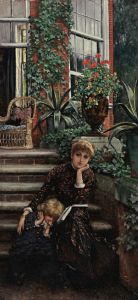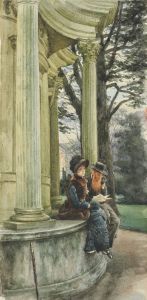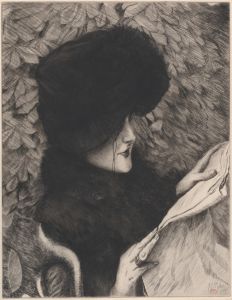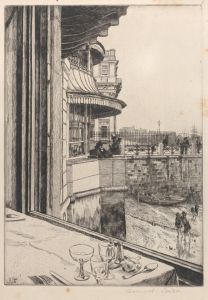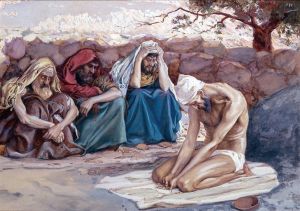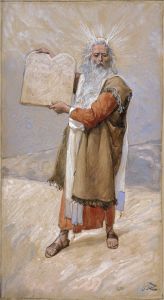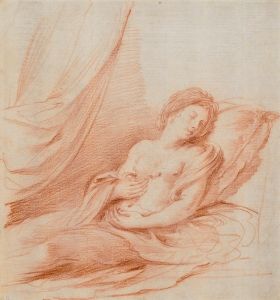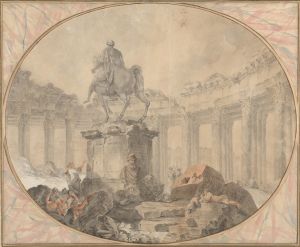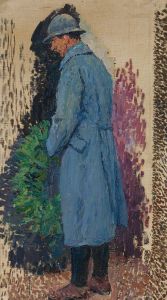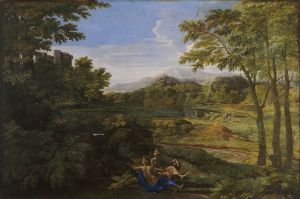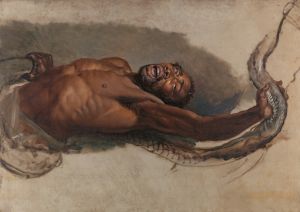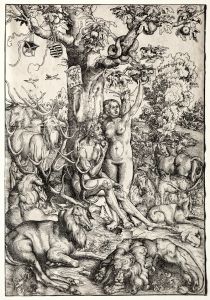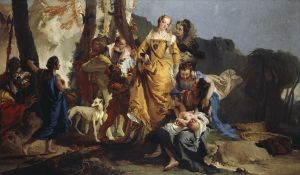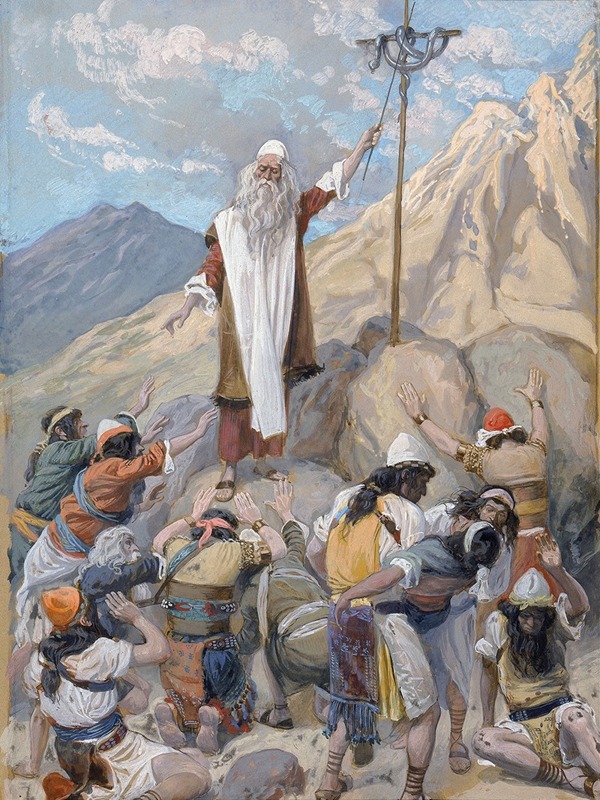
The Brazen Serpent
A hand-painted replica of James Tissot’s masterpiece The Brazen Serpent, meticulously crafted by professional artists to capture the true essence of the original. Each piece is created with museum-quality canvas and rare mineral pigments, carefully painted by experienced artists with delicate brushstrokes and rich, layered colors to perfectly recreate the texture of the original artwork. Unlike machine-printed reproductions, this hand-painted version brings the painting to life, infused with the artist’s emotions and skill in every stroke. Whether for personal collection or home decoration, it instantly elevates the artistic atmosphere of any space.
"The Brazen Serpent" is a painting by the French artist James Tissot, created in the late 19th century. Tissot, born Jacques Joseph Tissot in 1836, was known for his detailed and often dramatic depictions of biblical scenes, as well as his portraits and genre paintings. His work is characterized by its meticulous attention to detail and vibrant use of color, which are evident in "The Brazen Serpent."
This painting is part of Tissot's ambitious series of watercolor illustrations for the Bible, which he worked on extensively after experiencing a religious conversion in the 1880s. The series, known as "The Life of Christ," was completed between 1886 and 1894 and includes over 350 illustrations. "The Brazen Serpent" is one of the Old Testament scenes included in this collection.
The subject of the painting is derived from the Book of Numbers in the Old Testament, specifically Numbers 21:4-9. The narrative describes how the Israelites, during their exodus from Egypt, spoke against God and Moses, leading to a plague of venomous snakes. To save the people, God instructed Moses to create a serpent of brass and mount it on a pole; those who looked upon it would be healed. This story is often interpreted as a prefiguration of the crucifixion of Jesus Christ, a theme that would have resonated with Tissot's religious interests.
Tissot's depiction of "The Brazen Serpent" captures the drama and desperation of the biblical scene. The composition is filled with figures in various states of suffering and supplication, their expressions and gestures conveying a sense of urgency and hope. The brazen serpent itself is prominently displayed, drawing the viewer's eye and symbolizing salvation.
The painting is executed in Tissot's signature style, with precise lines and a rich palette that brings the scene to life. His attention to historical and cultural details is evident in the costumes and settings, reflecting his extensive research into the biblical era. Tissot's work on this series was informed by his travels to the Middle East, where he sought to capture the authenticity of the landscapes and people.
"The Brazen Serpent" and the rest of Tissot's biblical illustrations were well-received during his lifetime and continue to be appreciated for their artistic and historical value. The series was exhibited in Paris and London before being acquired by the Brooklyn Museum in New York, where it remains an important part of their collection.
Tissot's work on biblical themes marked a significant shift in his career, moving away from the fashionable society scenes that had previously defined his oeuvre. "The Brazen Serpent" exemplifies his commitment to religious art and his ability to convey complex narratives through his paintings.





